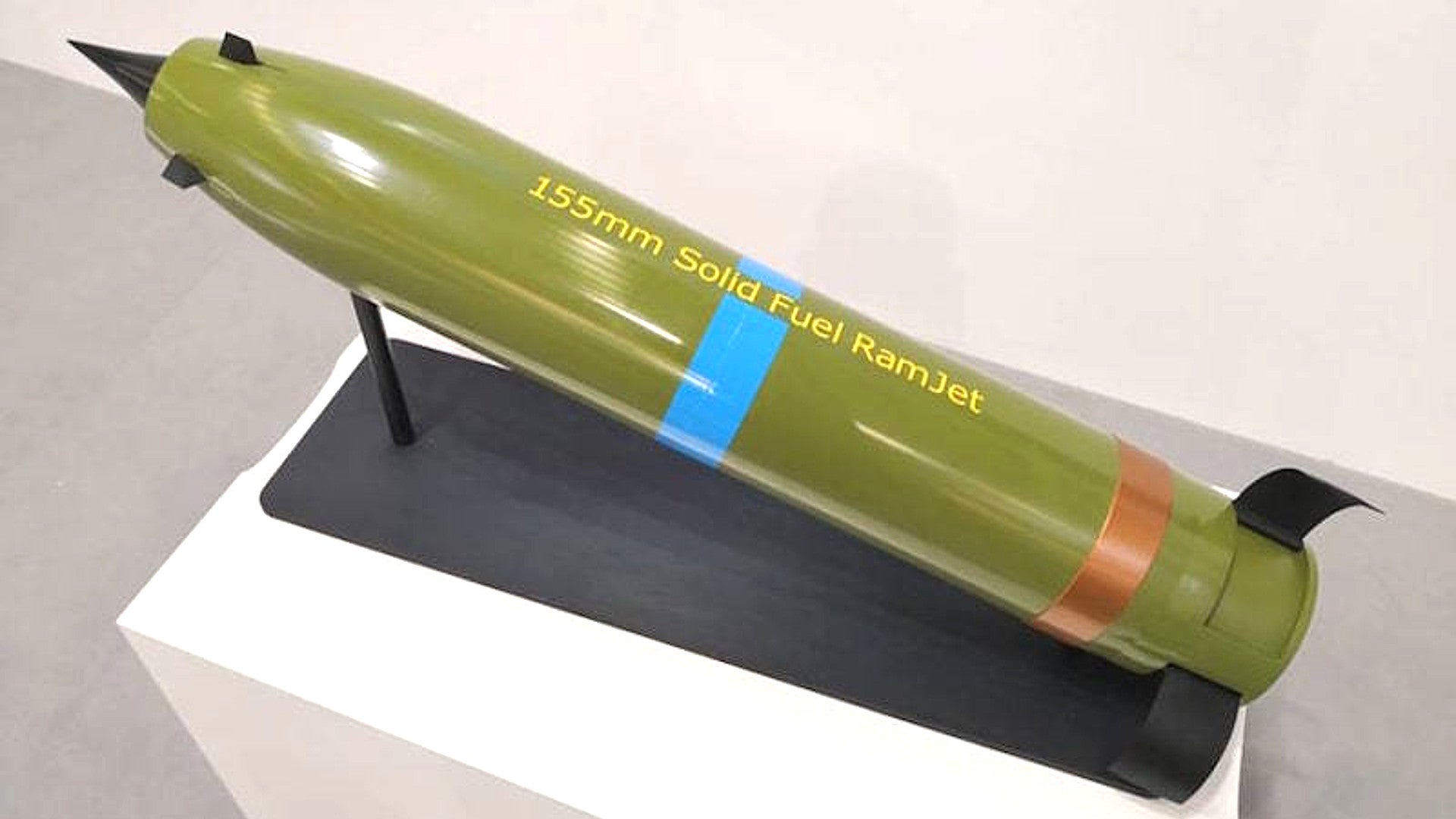Norway’s Nammo has unveiled a potentially revolutionary concept for an air-breathing, ramjet-powered, pseudo-missile that any standard 155mm howitzer can fire at targets more than 60 miles away. The U.S. Army has already expressed an interest in just such a projectile, which could also end up in service with the U.S. Marine Corps, and the round might finally offer a way for the U.S. Navy to make use of the cannons on its new, stealthy Zumwalt-class destroyers.
The defense contractor revealed a full-size mockup of the design, which it is simply calling the 155mm Solid Fuel Ramjet at present, at the biennial Eurosatory arms expo in the French capital Paris, which began on June 11, 2018. The firm expects to begin live-fire testing of the projectile in 2019 or 2020 and hopes to have the new ammunition in production and in operational service with a military by between 2023 and 2024.
“This could be a game-changer for artillery,” Thomas Danbolt, Vice President of Nammo’s Large Caliber Ammunitions division, said in a press release headlined “We are basically launching a missile from a cannon!” on June 12, 2018. “With the exception of a small number of precision guided shells with 50-60 km range [approximately 30 to 40 miles], most artillery systems still fire across the same distances as they did when the M109 was introduced more than 50 years ago.”
The U.S. Army’s self-propelled M109 or towed M777 155mm howitzers have maximum ranges of around 12 miles using standard high-explosive shells. Using rocket-assisted ammunition, they can hit targets closer to 20 miles away. Nammo is separately working on an improved, rocket-boosted shell for the service, the XM1113, which will have a maximum range of approximately 25 miles.

By extending the length of the howitzer’s barrel, the Army is hoping to nearly double those ranges. That still won’t be anywhere close to the more than 60-mile maximum range that Nammo says it will be able to get out of its ramjet-powered projectile.
According to the Norwegian company, the firing cycle would remain essentially the same for artillery crews, who would fire the projectile like any other shell. But normal shells essentially begin decelerating the moment they leave the cannon.
The ramjet round uses the force of launch to get it moving fast enough to start the ramjet motor. A solid fuel source will get the projectile up to a maximum speed of three times the speed of sound and keep it moving at that speed for approximately 50 seconds.
This type of motor also reduces drag on the shell itself, since it’s actively pulling the projectile through the air. The firm, which has long built rocket motors for other companies’ missiles, says it is looking into developing its own ramjet missile using the same technology, as well.
We don’t know how much volume within the shell has to go toward the ramjet and fuel now rather than explosive or other payloads, which could reduce the punch of the round. However, the solid propellant offers an efficient fuel source and will help keep as much space as possible free within the body.
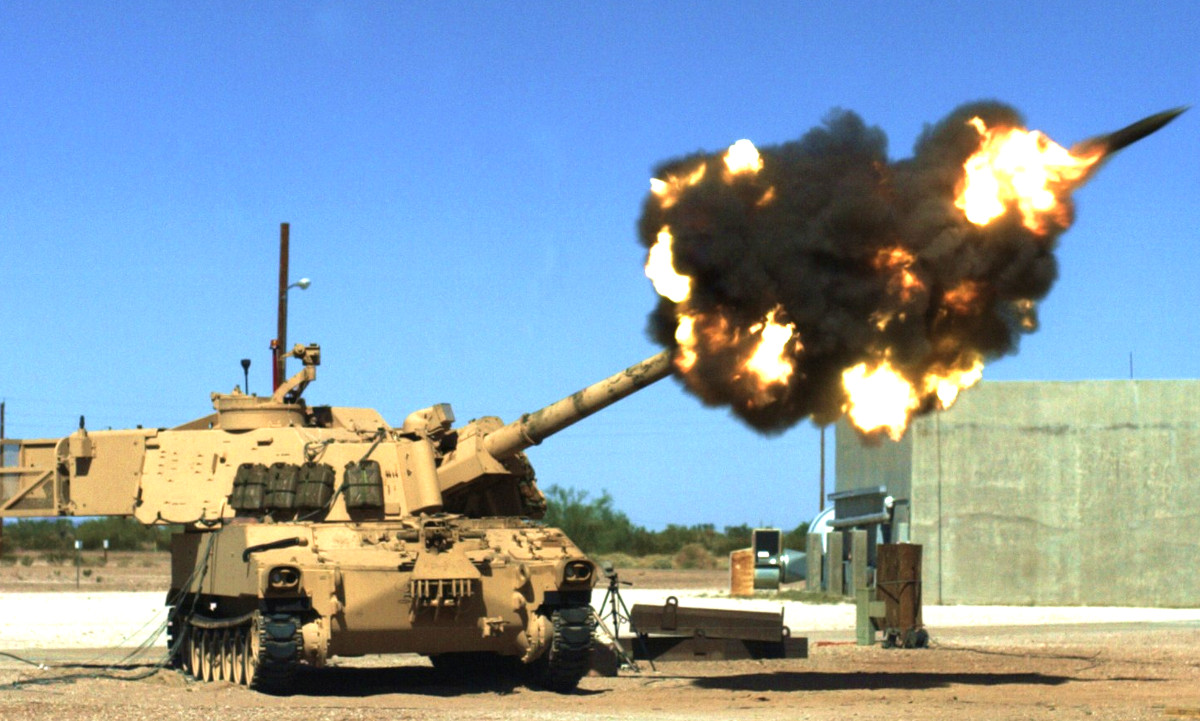
Pop-out fins and an unspecified guidance system will steer the projectile to its designated target. A GPS-assisted inertial navigation system (INS) arrangement will almost certainly guide the shell, at least at first.
A laser- or millimeter wave radar-guidance package could add additional flexibility to the system in the future. These systems could allow the projectile to hit moving targets at long ranges and, in the case of a laser-guided round, with manned or unmanned aircraft or forward-deployed troops on the ground designating the target with a laser or otherwise sharing that information with the artillery unit.
At Eurosatory 2018, Nammo’s Danbolt noted that that the ramjet round wouldn’t just extend the maximum range of a single howitzer, but would greatly expand the flexibility of individual artillery units to engage different targets. According to the executive, a six-gun battery would be able to hit anything within an approximately 1,500 square mile circle around their firing position with the new XM1113. The ramjet rounds would exponentially increase that possible target area to more than 12,000 square miles without the howitzers ever having to relocate.
What this means is that ground forces could operate far further from those elements while still having vital artillery support on call. Fewer artillery units could also cover a much wider front. Perhaps most importantly, it would allow the howitzers to sit much further removed from the front lines, better protecting them from immediate enemy counter-battery fire and air strikes.
There is “no set-in-stone firm requirement” for the ramjet projectile and the project is entirely a private venture on Nammo’s part, Danbolt said at Eurosatory 2018. “So far it is, but that may change.”
But the U.S. Army is definitely aware of and interested in the concept. At the Association of the United States Army’s Global Force Symposium in March 2018, U.S. Army Brigadier General Stephen Maranian specifically mentioned ramjet rounds among other potential future artillery concepts.
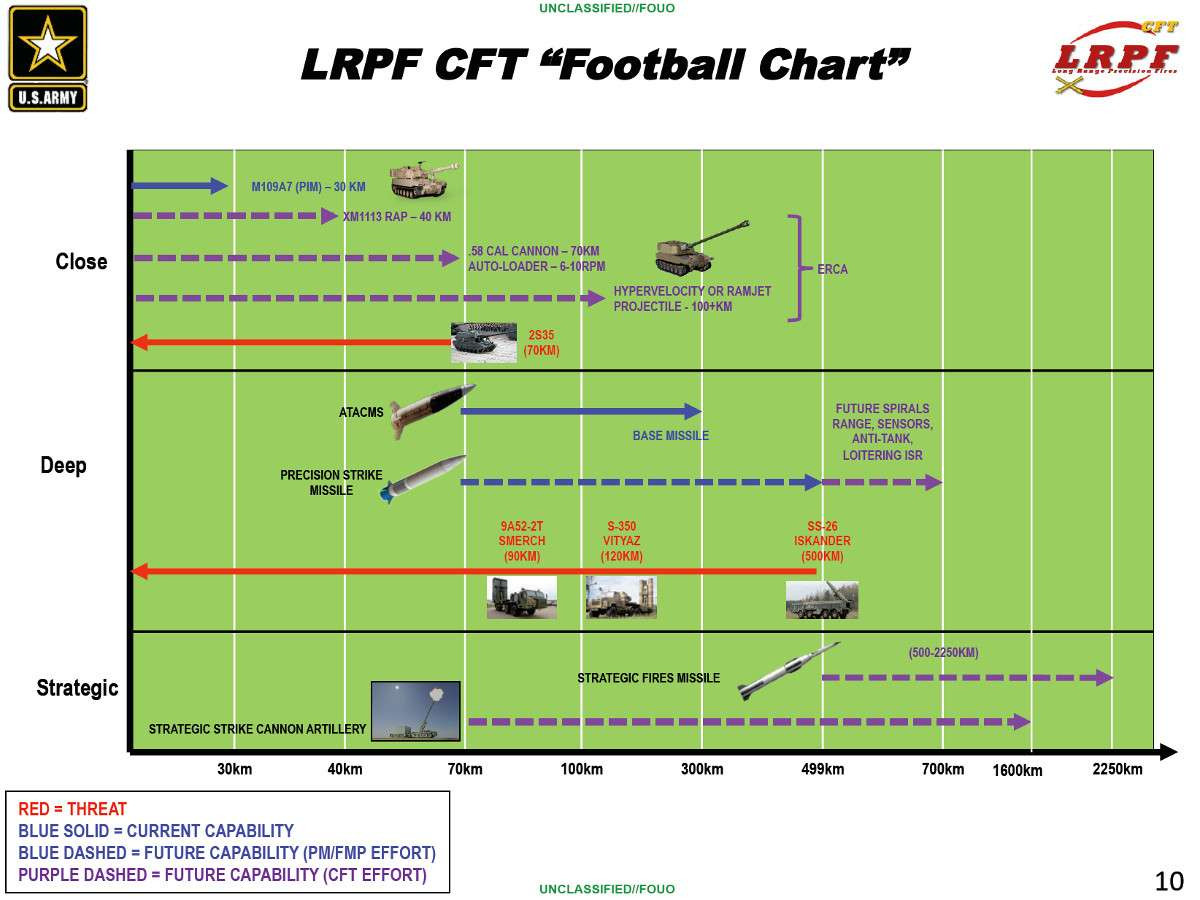
Maranian is in charge of the service’s new “cross functional team,” or CFT, for Long Range Precision Fires, or LRPF, which is in charge of exploring advanced existing and future technologies to improve the range and capability of artillery units. The brigadier general’s team is also looking into
railguns, long-range “superguns,” and various ground-launched missiles.
The U.S. Marine Corps, which will also eventually receive the XM1113 rocket-assisted 155mm shells, is likely to be interested in the ramjet round, which could be especially useful during expeditionary and distributed operations. The significantly increased range would give Marines more options for where to deploy their own M777 howitzers to support friendly forces, especially in the Pacific Region, where relatively small outcroppings of land are often separated by large expanses of water.
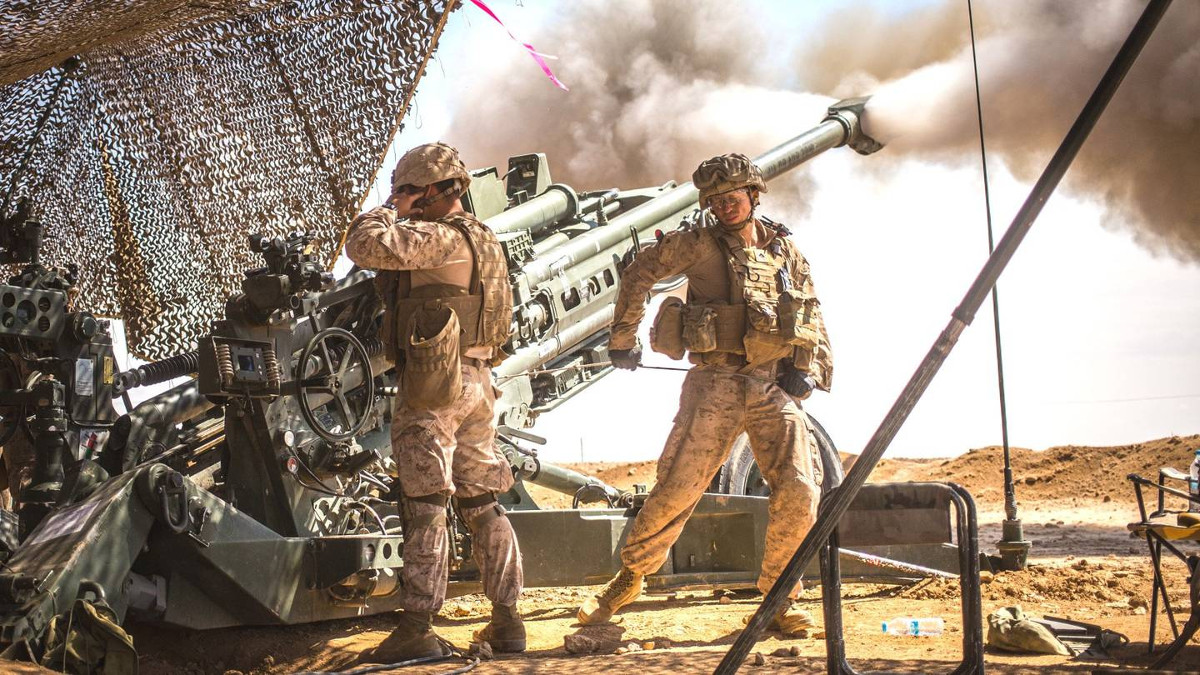
It might even make it a viable option to fire the guns from the decks of amphibious ships and sea bases, turning those vessels into floating firebases. The Marines have already begun exploring this concept with their truck-mounted High Mobility Rocket Artillery Systems (HIMARS).
And in the same vein, Nammo’s ramjet round could be an ideal option for the U.S. Navy to add the presently ammo-less 155mm guns on its Zumwalt-class destroyers. Since the goal seems to be for the new projectile to work with any existing system, it would be a far simpler option than replacing the cannons on the ships with another, entirely different system.
In 2016, the Navy decided not to buy the 155mm Long-Range Land Attack Projectile (LRLAP) round, given its exorbitant cost of $800,000 per shell. This has since left the Zumwalt’s guns as effectively dead weight, since existing howitzer ammunition does not have the necessary range to be a useful substitute.

The main question then becomes, just how expensive will Nammo’s ramjet round actually be? If its cost grows to anywhere near that of the LRLAP, it could easily turn off any prospective buyers.
Still, if any branch of the U.S. military does decide to take the lead on the ramjet project, they could easily look to allies and partners to help share the cost burdens. South Korea, in particular, could be very interested in the new ammunition, which would allow its howitzers to reach further into North Korea during a conflict or let units move further away from the demilitarized zone where fighting would be especially heavy in the event of an actual war.
In 2016, South Korean defense contractor Poongsan revealed its own ramjet artillery shell concept, which had an estimated range of nearly 50 miles. According to Jane’s 360, this design would be slower and would have less fuel for its motor than Nammo’s round.
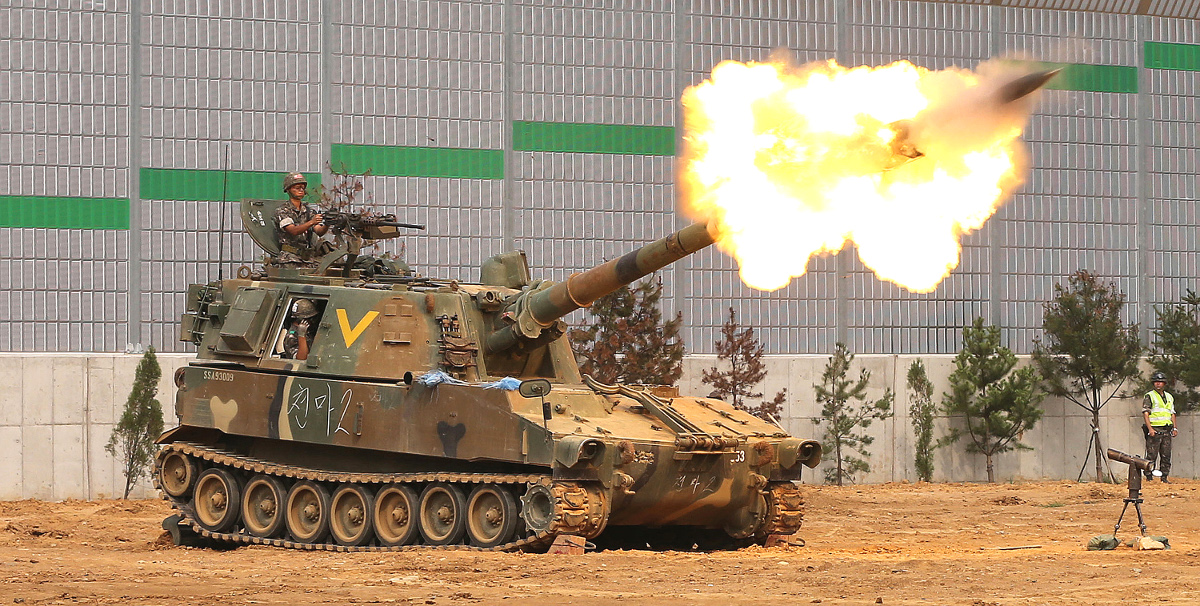
NATO members in Europe, especially those along the alliance’s eastern flank right up against Russia, might be interested in the ramjet-powered projectiles for similar reasons. In the Baltic Sea region, the shells could allow the small Baltic States of Estonia, Latvia, and Lithuania, or other allies in those countries or nearby, to better cover all avenues of approach at once even with limited artillery units.
Nammo’s Danbolt declared that the ramjet projectile could “completely change” how traditional artillery units operate. With the significant added range, those elements would be able to potentially operate with smaller footprints, better shielded from threats in both low- and high-end conflicts, while covering the same total area.

But it’s also not the only concept that companies are pitching to squeeze more range out of existing 155mm howitzers. The Army, in cooperation with the Navy, is separately exploring the possibility of launching inert, hypervelocity projectiles derived from experimental railgun ammunition from standard cannons. These would reach the same speed as the ramjet round, but would still likely have a significantly shorter overall range.
There may also a cost question when it comes to wear and tear on the gun barrels. The more rounds you fire at higher speeds through a howitzer, the faster the rifling and overall structural integrity of the system wears down. This reduces overall accuracy and can potentially lead to catastrophic failures.
Depending on how fast crews need to fire the ramjet shells to get them to the appropriate speed, and whether or not the round’s motor begins to work inside the barrel, the ammunition could exert a high strain on the howitzer’s barrel and shorten the time before units need to replace them. Improvements to the existing guns could help mitigate these issues and extend barrel life, but would again require additional time and resources.
Whatever happens, there’s no denying that the ramjet artillery shell, if it works, will be an impressive feat of engineering and could offer game-changing capabilities for traditional howitzers.
Contact the author: jtrevithickpr@gmail.com
